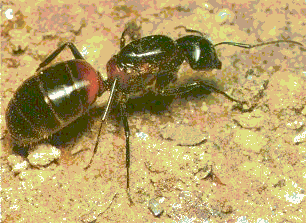There really are some crazy people out there!
The world record for calculating Pi currently stands at:
206,158,430,000 d.p's
This was done by Yasumasa Kanada and Daisuke Takahashi, is took 37:21:04 hours, and took up 865 GB of space. They used the Gauss-Legendre algorithm. This record was set in 1999. They have since exceeded this with a value of 1.2411 trillion places! but have yet to have this confirmed as the new record.
In the 1600's Van Ceulen spent most of his life calculating Pi using Archimedes' method. He spent so long that the 35 decimal places he managed to reach are all engraved on his tombstone.
There is a website which allows you to search Pi (or a bit of it anyway) for your birthday. http://www.facade.com/legacy/amiinpi/ When I entered my birthday, 30th October 82 I found that it appears in Pi starting at the 199892th place. Amazing fact Will Dennis' birthday is not in the first million and a quater digits of Pi!!
If you can memorise digits of Pi there are many websites that you can sign up to to immortalise your prowess, (or stupidity). The world record currently stands at 42,195 decimal places. This was done by Hiroyuki Goto of Japan.
http://pi-world-ranking-list.com/lists/memo/index.html the world record is on here.
And also http://www.albanyconsort.com/pi/
People have even composed songs and poems about Pi, but it goes against my principles to list them here!
A final but interesting section is that of ants.

this picture came from http://ant.edb.miyakyo-u.ac.jp/INTRODUCTION/Gakken79E/Page_34.html
Ants have been found to use a rudimentary calculation of Pi, Buffon's needling experiment, to find the size of a potential nesting site even in the dark.
Eamonn B. Mallon and Nigel R. Franks, April 22 Proceedings of the Royal Society, London (B).
It was found that ants of the species Leptothorax albipennis choose nesting sites depending on the size of their colony. A number were taken to find how. They were placed in large petri dishes and given a choice of nesting sites of different sizes. It was found that when a scout first looks at a new area it lays a pheromone track. When it goes back it takes a different track, and repeatedly crosses it first path. By counting the number of times it intersects with the first path it can use a basic version of Buffons theorem to find the area of the site.
The estimated area, A, of a flat surface is inversely proportional to the number of intersections, N, between two sets of lines, of total lengths S and L, randomly scattered across the surface, or A = p.
quoted from http://www.maa.org/mathland/mathtrek_5_15_00.html